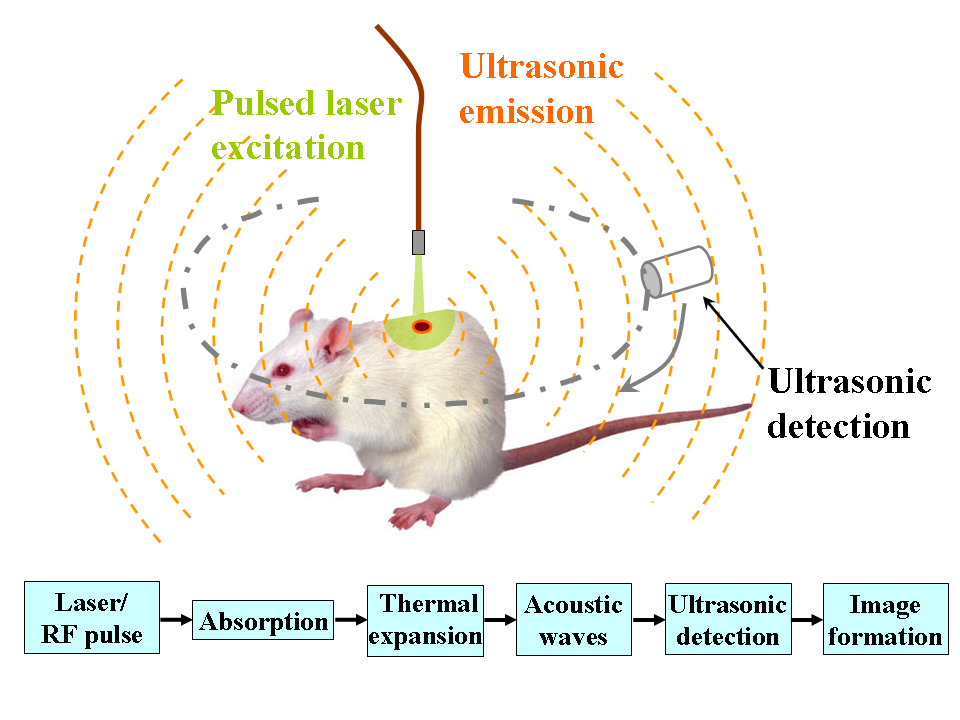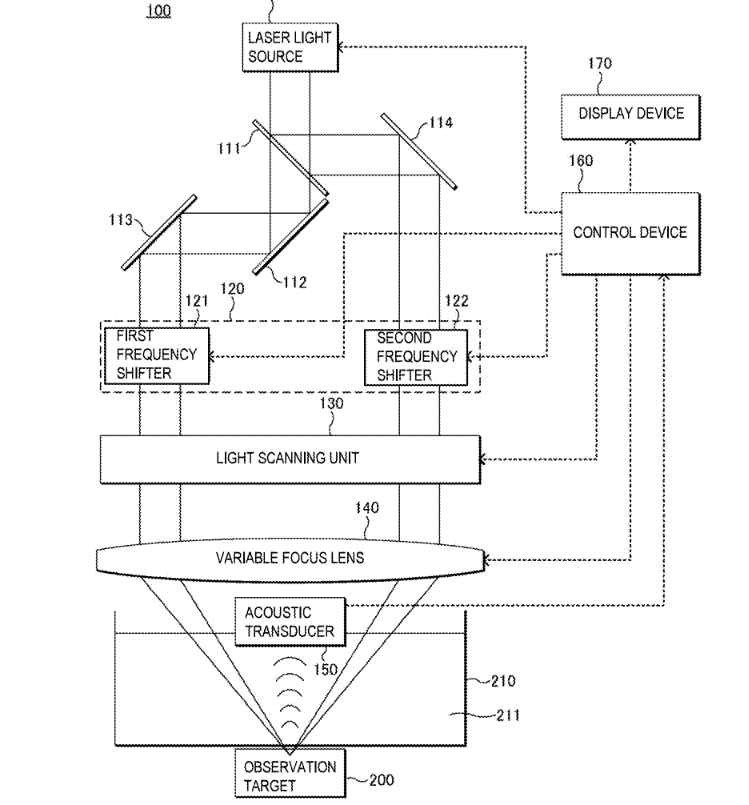Recently, I was reading Hacker news and realized I hadn't created prior art in the field of photo-acoustic imaging.
The photoacoustic effect or optoacoustic effect is the formation of sound waves following light absorption in a material sample.
Basically the schema is as follows; you scan with a laser beam over tissue or gas and then detect the produced sound waves. From it you can determine the material properties.

The effect was discovered by Graham Bell in 1880. A general patent by Hitachi can be found here US5781294A. The claim is quite nice and general but the patent expired in 2012.
Olympus corp filed a patent for using this effect with a galvo scanner. The patent is valid up to 2035 and its number is US10209226B2. Let's have a look at claim one;
"... the scanning unit includes a movable mirror which changes an angle of incidence of the excitation light incident on the objective lens, and ... "
Prior art is constructed as follows;
"... the scanning unit includes a scanning prism which changes an angle of incidence of the excitation light incident on the objective lens, and ... "
A more complicated patent example from 2018 with two beams by Yokogawa electric corporation can be found here US20180140199A1 .

As we can see the patent propose the use of two frequency shifted beams from the same light source which are then coupled into a single point by a variable focus lens.
However, what is also clear is that this lens is positioned after the light scanning unit. I claim that the lens is positioned before the light scanning unit in a prism scanner. This was not obvious to the claimant as it obviously thought of the light scanning unit being a galvo scanner or a rotating mirror.
I claim the reverse effect. So here an ultrasound wave is produced and the result is detected via an interferometer which uses a scanning prism. The idea is similar to the optical coherance tomography setup I discussed earlier. A patent by Hitachi can be found here US20130160552A1 but it expired as they seem to have stopped paying the fee.
A Dutch research group from the TU Twente used the effect to detect breast cancer. The optical effect is non-invasive but does not have a deep penetration depth. I claim the same but then for a scanning prism and also other forms of skin cancer, skin deseases, cancer etc.
Now when I think of it.. the TU Twente also built the Brandaris 128. It is a fast imaging camera which use a rotating mirror at 1.2 million RPM see http://stilton.tnw.utwente.nl/people/michel/Michel_Versluis/Brandaris_128.html.
This was an experimental project so I don't believe you can buy one commercially. Cordin does sell them and they have mirrors rotating at 5000 RPS which is like 300.000 RPM. This is quite nice as it serves as an example of how fast prisms could rotate. These cameras with rotating mirrors are used in research and have been used to detect nuclear explosions etc.
 Hexastorm
Hexastorm
Discussions
Become a Hackaday.io Member
Create an account to leave a comment. Already have an account? Log In.